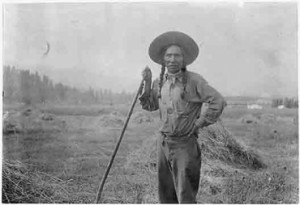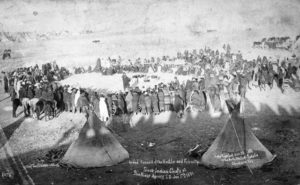John Collier’s article about Amerindians (see last post) laid the blame for much of the Indians’ misery on the Bureau of Indian Affairs. Indians were now full citizens of the United States, Collier wrote, but unlike all other citizens, were completely under the control of Congress through the Bureau of Indian Affairs (BIA). The BIA controlled Indian property valued at $1,650,000,000, Indian income, and even their persons to a great extent.
The BIA could force Indian children to go to schools hundreds of miles away from home, “enforce an unpublished penal code” that allowed them to arrest Indians at will, censor Indians’ religious observances, and nullify an Indian’s last will and testament unless it had been previously approved by the BIA.
Worst of all, said Collier, the BIA “makes accounting to no agency juristic, legislative, and administrative.” It acted as a government unto itself and had a monopoly of control on reservations. He did note that the agency was finally having to account for itself through a survey being conducted at the time of his writing. This accounting resulted in the Meriam Report, discussed in posts on May 12-19.
________________________________________________________________________





